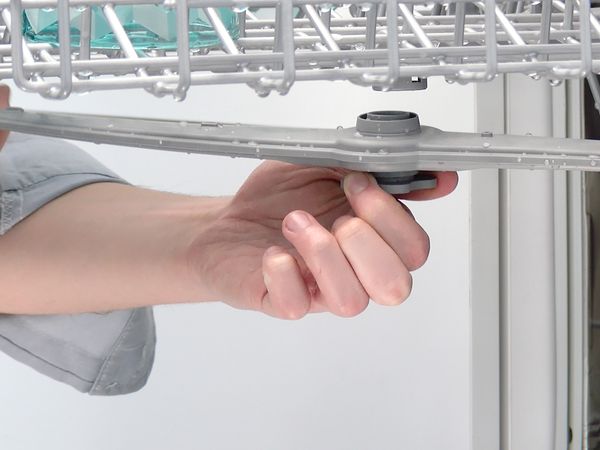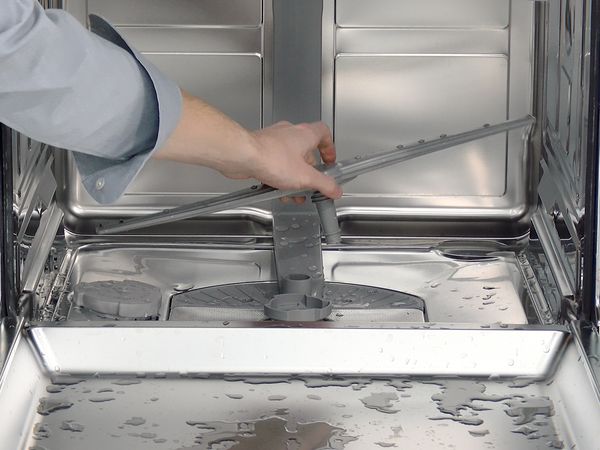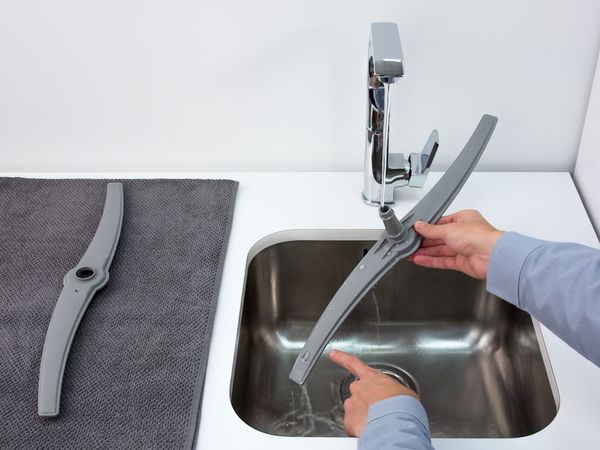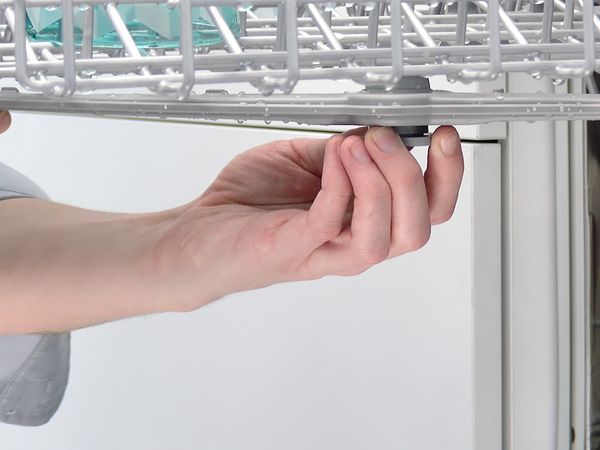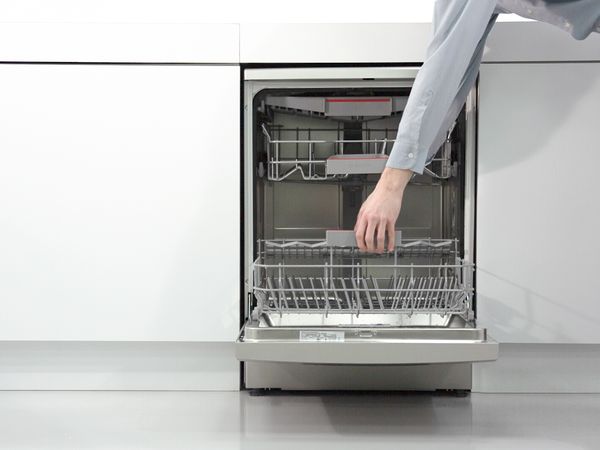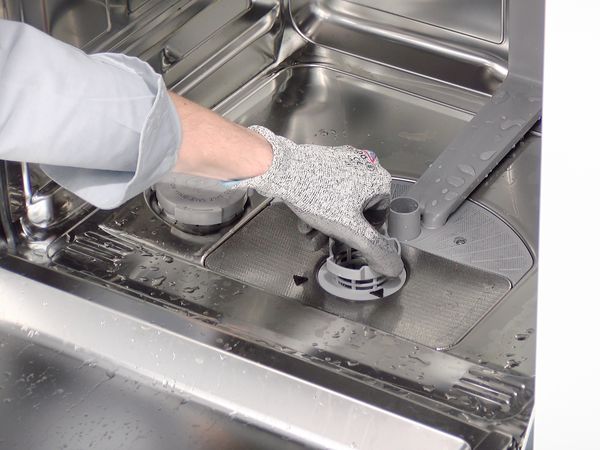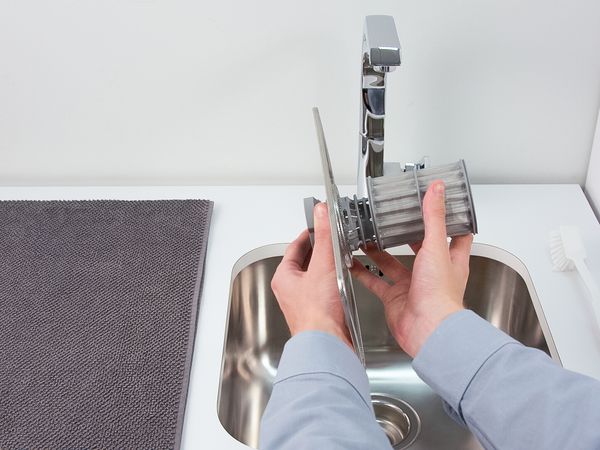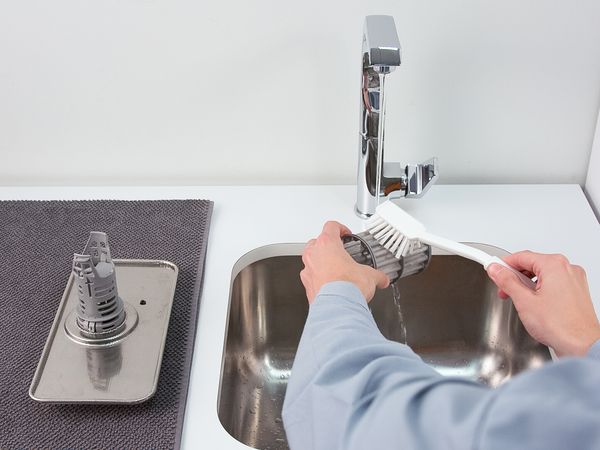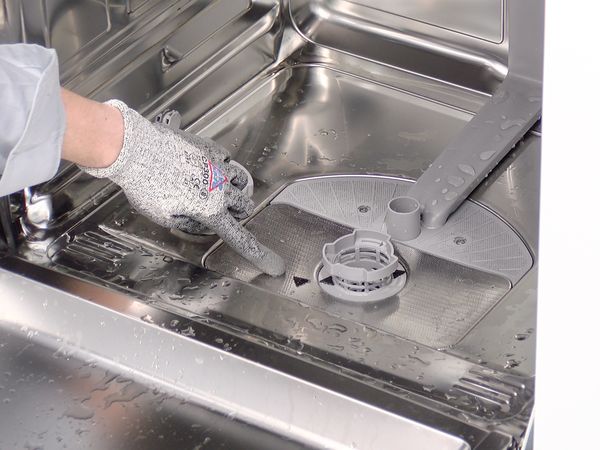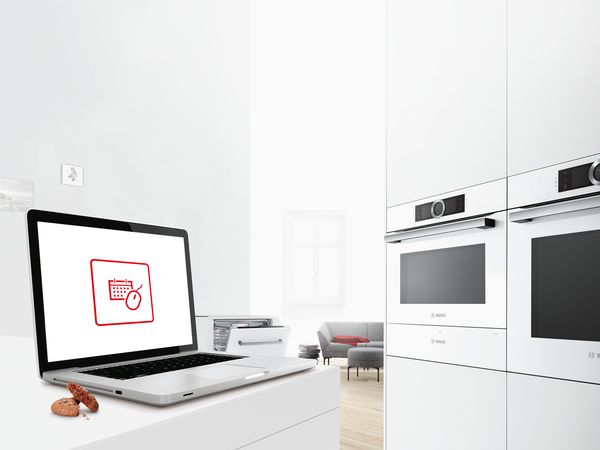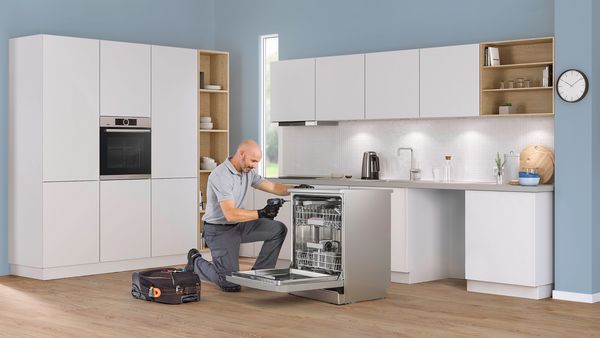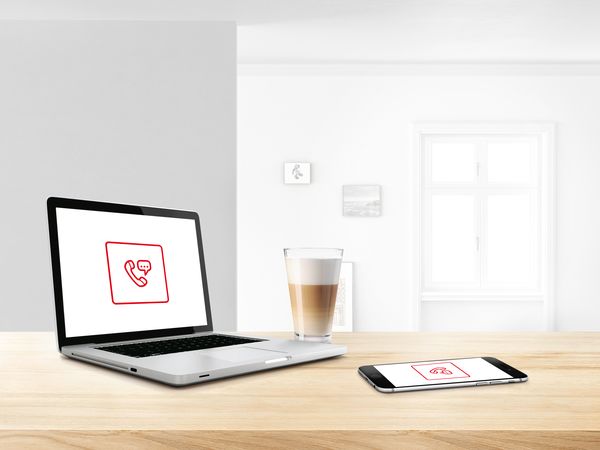Is your dishwasher not cleaning dishes? Don’t worry. The issue is normally something that can be quickly fixed at home. 5 checks of possible causes are shown below to resolve the problem.
Please read carefully through the troubleshooting guide to get your dishwasher back in working order.
1. Check if your Dishwasher tablet has dissolved
One of the main reasons why the dishes remain unclean after a cycle is because the dishwasher tablet has not dissolved properly. To check if this is the problem you’re facing, locate the tablet collecting tray which holds the dishwasher tablet and see if it has fully dissolved.
2. Check if your spray arms are blocked
Your spray arms should be able to rotate freely and there should be no signs of blockage across the nozzles on the spray arms. If they appear blocked, you can use tweezers or a cocktail stick to clean the debris. Blocked spray arms will not be able to distribute water adequately, which will prevent the dishwasher tablet from dissolving.
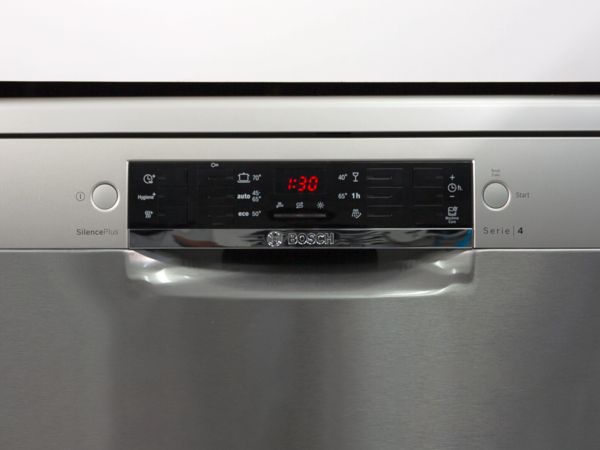
Clean the spray arms of your dishwasher
Follow the instructions in the video to clean the spray arms of your dishwasher.
Step by step guide:
3. Now check the filter
The dishwasher filter is designed to catch the dirt and deposits from the dishes or items being cleaned. If the filter gets clogged, the appliance’s water flow will be disrupted and the dishwasher will no longer function properly. In some cases the dirt may be redeposited on the dishes or items being washed.
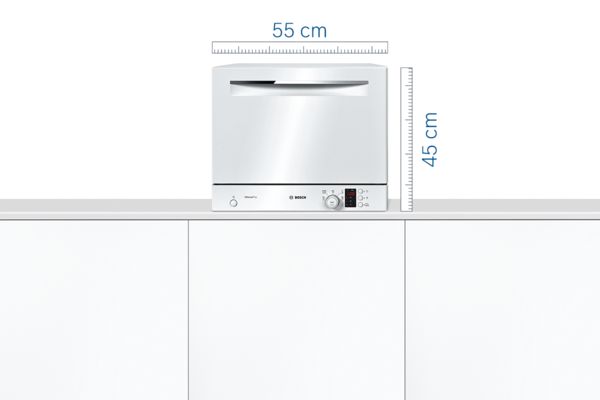
Follow the instructions in the video to clean the filter system of your dishwasher.
Step by step guide:
4. Check the proper loading
Loading the dishwasher correctly is very important when it comes to effective cleaning results. If the dishes are not well organised, the water will not reach all parts of the items being washed and you have to run another load just to clean the few items that are still dirty. In the upper basket, you should arrange cups and glasses. Note that utensils must not be placed above the tablet collecting tray as these may block the lid of the detergent dispenser, preventing the dishwasher tablet from dissolving. The lower basket of the dishwasher is used to arrange the pots, pans and plates. Heavily soiled pans should be placed in the lower basket where the spray jet is more intense and there is more space available.
Follow these 8 tips on how to load your dishwasher correctly:
Top rack
1. Safe space for cups, glasses and small bowls.
Ensure that you leave enough space between the items. This is essential as obstruction can cause breakage and grease stains. Tall champagne and wine glasses should go in the bottom rack, where they can be placed in a secure glass holder.
2. Place dishwasher-safe plastics in the top rack to keep them away from exposure to high temperature.
Bottom rack
3. Larger items such as dishes, salad bowls and pans belong to the bottom rack, where there’s more space. You can even add baking trays, grill racks or fridge shelves.
4. There’s no need pre-rinse dishes when loading the appliance as the rinse programme has this covered. However, you should always scrape off any big chunks of food that can block the dishwasher filter.
5. Serving plates and chopping boards go to the side. This is because large items can easily obstruct the spray arms and block the water flow. While you can clean wooden chopping boards inside the dishwasher, we recommend hand-washing to avoid any splintering.
6. Clip to clean. You can clip baby bottles and other small plastic items such as lids and cups for a more stabilised wash.
Cutlery
7. Place knives sharp-edge down. This will help to avoid any injury when unloading the dishwasher, as well as stop bacteria from coming into direct contact with the blade.
8. Mix up the cutlery if your appliance is not fitted with a cutlery draw. Forks and spoons in the cutlery basket should be mixed to prevent nesting and blocking off the water. If your dishwasher is fitted with a cutlery draw, you should place same items alongside each other to conserve space.
5. Check program setting and dishwasher detergent
To clean dirtier dishes with stubborn burnt-in food remnants, we recommend selecting a programme with a higher temperature setting. Please refer to your instruction manual for more information about the programme settings.
Sometimes the usage of dishwasher detergent instead of dishwasher tabs may solve the issue.
Have you checked the tips and the issue isn’t gone?
If you have followed the information above but you're still having problems with your Bosch dishwasher then you might want to have it checked out by a Bosch service expert.
Links which might be interesting for you:
- More info about troubleshooting for dishwashers:
Overview page - User manuals for dishwashers:
User manuals - Spare parts in our online-shop:
Spare parts - Cleaning and care products in our online-shop:
Online-shop - Fitting accessories and other products:
Accessories
